Living Body/ies: The Interview Corner with Marija Baranauskaite
(Re)discover the work of Lithuanian artist Marija Baranauskaitė through the interview that was part of Living Body/ies, Circostrada's first annual red-thread publication. The Duck Performance will be presented at the CircusDanceFestival in Cologne end of May 2023, along with a documentary on the project that will be featured during the film night programme.
How does the term “Living body/ies” resonate with you?
For the last four years, in my artistic research, I was way more interested in the notion of non-living bodies. I used to create shows that were not intended for human audiences, but for objects instead. Paradoxically, exploring non-living bodies, such as sofas, has allowed me and other humans to relate better to what a living body is. It is hard to understand your own vitality while just being alive and being busy with your daily routines. On the other hand, trying to get to know non-living beings, and comparing yourself to them makes it easier to grasp what it is that makes you alive. In my work, I did experiments where I did not allow people to enter the performance space unless they pretended that they were not alive, that they were things. Afterwards, I saw many people shocked when they realised that it’s impossible for them not to move, that they can't shut their brains or stop breathing, that they sweat, and they have an urge to use the bathroom at some point. Moreover, if living human bodies come to see the show, they have an urge to criticise, judge, and categorise, but also to experience joy, laughter and well-being. This year, I expanded my research to living bodies. However, whereas before I chose to perform myself for non-living beings, in this research I explore how a different kind of living being can perform for humans. I chose ducks as my performers and at the moment I am searching for a way to facilitate an artistic vision of ducks in their natural habitat, which does not require adapting their living patterns to our own human and artistic needs.
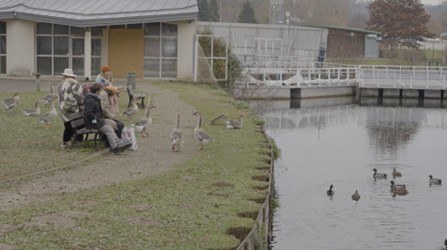
In your site-specific work-in- progress Duck Performance, you are questioning the relationship between performers/human and animals - moving away from the traditional circus pattern, in which animals are being trained to perform - to embrace an approach in which the animal is the performer, in its natural environment. What did you learn throughout your research process, and what were you trying to achieve with this experience?
![]() After making many shows for non-human audiences, a friend of mine suggested that maybe I should still consider making a show for humans. But I did not feel it would be in line with my artistic practice to eliminate the non-human aspects of my work. I did not want to perform for humans myself, so I started to question if someone else, not me and not other humans could perform for humans. Then, I realised that animals have been performing for humans throughout the ages in circuses, zoos and now on social media. I had a long and strong connection to ducks so I thought: Should I ask ducks to perform? There is a need to reinvent our relationship with animals on stage. During the last century, humans, rightfully, started to fight for animal rights so bringing them on stage became an illegal thing to do. This was a way to protect animals from being abused in training and performances and also not to force them to be where they naturally would not. So I started to question whether or not we could still enjoy seeing animals on stage but without disturbing them in a way that would be against their rights. With ducks this was not difficult to investigate, I could find them all around in many parks and began simply observing them. Just the way they were entirely themselves was fascinating to me, and also somehow quite similar to our contemporary scene. More and more shows are made based on what performers truly are, instead of pretending to be someone they are not, and creating characters; more and more site-specific works appear where natural environments take over the imaginary stage setting. After a while, I decided to look for a way to show ducks as performers to human audiences, but without intervening in their normal daily lives. I tried it, and it worked, so I think that is my biggest lesson - you do not need to abuse or train anyone in order to see them performing. We already manage to do this with humans, so why not do it with other species too?
After making many shows for non-human audiences, a friend of mine suggested that maybe I should still consider making a show for humans. But I did not feel it would be in line with my artistic practice to eliminate the non-human aspects of my work. I did not want to perform for humans myself, so I started to question if someone else, not me and not other humans could perform for humans. Then, I realised that animals have been performing for humans throughout the ages in circuses, zoos and now on social media. I had a long and strong connection to ducks so I thought: Should I ask ducks to perform? There is a need to reinvent our relationship with animals on stage. During the last century, humans, rightfully, started to fight for animal rights so bringing them on stage became an illegal thing to do. This was a way to protect animals from being abused in training and performances and also not to force them to be where they naturally would not. So I started to question whether or not we could still enjoy seeing animals on stage but without disturbing them in a way that would be against their rights. With ducks this was not difficult to investigate, I could find them all around in many parks and began simply observing them. Just the way they were entirely themselves was fascinating to me, and also somehow quite similar to our contemporary scene. More and more shows are made based on what performers truly are, instead of pretending to be someone they are not, and creating characters; more and more site-specific works appear where natural environments take over the imaginary stage setting. After a while, I decided to look for a way to show ducks as performers to human audiences, but without intervening in their normal daily lives. I tried it, and it worked, so I think that is my biggest lesson - you do not need to abuse or train anyone in order to see them performing. We already manage to do this with humans, so why not do it with other species too?

Why was it important for you to include and connect with other living beings in your circus creations?
In my experiments performing for objects, it became super interesting to observe how challenging it is for humans not to be at the centre of attention. Since The Sofa Project was a solo show, I did not need to rehearse with other humans, so there was only me and sofas, which brought a lot of creative freedom. With the Duck Performance, I wanted to explore how it would be to work with other living bodies that do not judge, criticise or have a need to be pleased. That was one of the reasons why I included ducks. Even though ducks would never complain about the process, it is challenging to direct them, because I am not in control of what is happening. I might come to the performance space, and the ducks are not there. They might leave in the middle of the show. Sometimes, during the show, male ducks engage in sexually abusive behaviour towards their female partners. Other birds, such as geese or black swans, might invade the show. But I cannot do anything about it, so I have to trust the ducks and the process. What I can do, is to make an atmosphere pleasant for humans that come to see the piece. People visiting the traditional circus were often getting popcorn and drinks for the show. So I decided to give them drinks and seeds that they can eat or share with the ducks and express their thankfulness. It is really important that my human audience does not feed the ducks during the show, as it shifts the focus of the performance away from the ducks as they are and towards their need for food. Getting the seeds from the humans for the ducks becomes more central than performing the life of a duck. The seeds are only meant for after the show. According to me, circus is always about trying to do something impossible. Even though I do not use my own body to reach and overcome the limits of what we can do, I try to reach the impossible conceptually by including other living bodies. It is really hard to imagine that ducks, who do not know that art, circus and theatre exist, would be circus performers themselves. To attempt that – is circus for me. Also, ducks are simply funny. They surely have a funny bone.
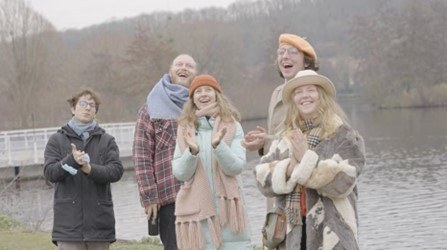
How did the local audience react to this performance? Do you think by making more performances like these, people will be more caring towards the world that surrounds them?
Humans become happy when seeing ducks perform. Animals are super interesting to observe. They are different, they have a different point-of-view of life, and this allows people to expand their own understanding of life. Also, since there is no specific meaning that ducks manifest with their performance, there is a lot of space for the public to imagine new things. I do not know if people will become more caring, but at least they could become more observant and attentive, which is a wonderful starting point. To notice. This is what I would be happy to inspire you to do.
What would be your wish for the future of contemporary circus in Lithuania when it comes to embracing greener initiatives? What is more urgent in this area?
I think when we think of sustainability, it is also important to think of it in terms of practices that can sustain one’s living. The biggest urgency in the contemporary circus field in Lithuania is to have more artists creating works, as we are so few. You can still count all of us on your fingers. And when there will be a good enough support system, when artists will not have to fight for covering their basic living needs and will be able to make their art freely, I think greener initiatives will appear.
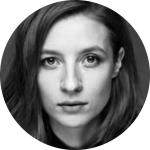
Marija Baranauskaitė (b. 1990) is one of the first professional contemporary circus creators in Lithuania. She started her career on stage as a contemporary dance performer and later graduated from the Philippe Gaulier clown school in Paris. For 11 years she worked at RED NOSES Clown Doctors as an actress and lecturer and between 2018–2020 worked as its artistic director. She co-founded the Contemporary Circus Association in Lithuania, teaches at the Lithuanian Academy of Music and Theatre and has created and collaborated on a dozen dance, theatre and circus performances and compositions. She is selected by The Sphere community to remake Andrea Salustri's creation Materia.



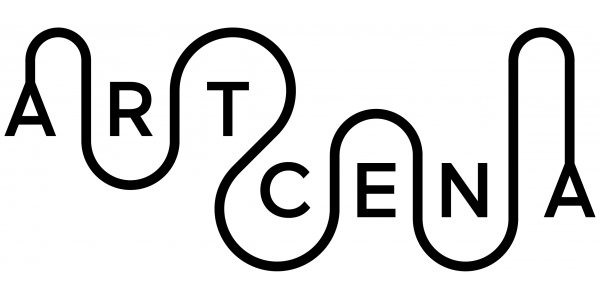

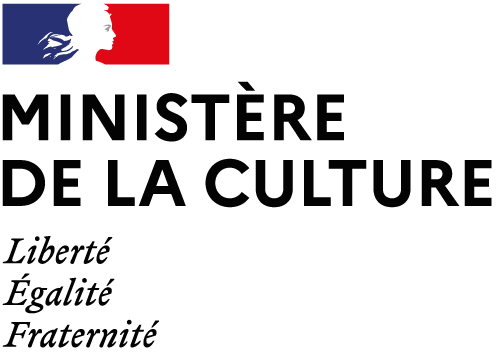
write us: infocircostrada@artcena.fr